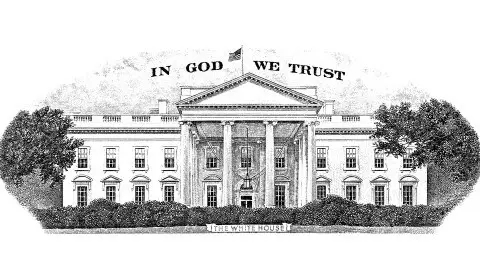Trump strikes the dollar down
In an interview with CNBC, President Trump cited that he's “not thrilled” with the Fed raising interest rates and noted that the Chinese yuan is “dropping like a rock”. The administration's desire for a weaker US dollar shouldn't come as much of a surprise to markets - we've heard this before. But Trump's comments will most likely mark a top in the USD rally
Initial thoughts on Trump's dollar jawboning... anyone surprised?
We suspect the President's comments on US interest rates and currency markets will almost likely put an end to the USD rally – and in the absence of any immediate escalation the global trade war, it’s a mini lifeline for EM and risky currencies elsewhere. We’d always been wary of the administration’s desire for a weaker USD – and that in itself USD weakness could become self-fulfilling if that is the White House’s objective.
Indeed, this draws parallels to what we saw in January 2018 – when Treasury Secretary Mnuchin let slip about a “weak US dollar”. Moreover, Donald Trump's views shouldn’t be new news to USD markets – we heard the President talk down the US dollar and cite a desire for low interest rates back in April 2017. The White House may be running damage control by quickly coming out with a statement that the President "respects the independence" of the Fed.
Political economy of a weak dollar is a medium-term negative
While back in January the DXY index fell around 5% in a short window (with Secretary Mnuchin’s comments partly adding fuel to the weak USD fire) – we’re shouldn't get too carried away. The political economy of the dollar is a medium-term negative; however, the fundamental outlook for major currencies - such as the EUR, JPY and CNY - is considerably weaker relative to January 2018 (when markets were dominated by the theme of synchronised global growth, which the current trade wars have put a dent to). As such, the President's comments are more likely to, on the margin, stem flows into USD assets given renewed (explicit) uncertainty over the US administration’s dollar policy – however, we're unlikely to see the same degree of weakness that we saw back in January.
Bottom line: A top in the USD rally but no material decline for now
With the short-term fundamental USD dynamics having already started to turn before President Trump's comments (Fed Chair Powell merely gave the USD one final push) – we think this now almost likely marks a top in the USD rally in the absence of any further near-term escalation in the global trade war narrative. It'll certainly sow renewed seeds of doubt into global investors when assessing the outlook for USD assets. It's likely that major FX pairs return back to trading within current (narrow) ranges.
We look for EUR/USD to stay within the 1.15-1.18 range for the rest of summer - while the odds of USD/JPY moving above 114-115 have been greatly reduced.
Political economy of the US dollar a medium-term negative
For more on why the Trump administration's implicit weak dollar policy will be self-fulfilling over the medium-term, please our previous notes:
- FX Hot Topics: A ‘Mercantilist and Mercurial’ Dollar Policy (January 2018)
- USD: The Trump Trilemma (January 2018)
- Deconstructing Trump’s Dollar Talk (April 2017)
This publication has been prepared by ING solely for information purposes irrespective of a particular user's means, financial situation or investment objectives. The information does not constitute investment recommendation, and nor is it investment, legal or tax advice or an offer or solicitation to purchase or sell any financial instrument. Read more
Download
Download opinion
19 July 2018
In Case You Missed It: Nothing thrilling This bundle contains 6 Articles
Viraj Patel
Viraj is an FX strategist at ING. He has been with the firm since January 2015 and covers developed markets. Prior to this, he worked at Barclays and the Bank of England. Viraj read Economics at the University of Cambridge and is currently working towards his CFA charter.
Viraj Patel is no longer part of the ING THINK team
